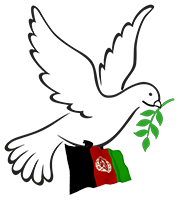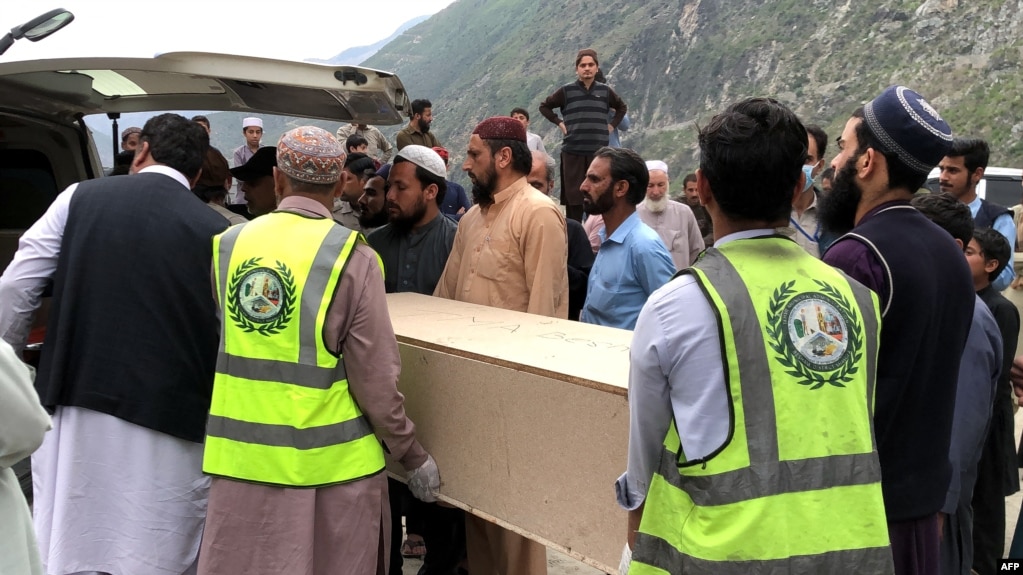Fatema Hosseini
USA TODAY
Tuesday, April 2, 2024
The terrorist group blamed by the U.S. for a ruthless massacre at a Moscow rock concert has steadily increased its ranks, capabilities, financial network and global recruitment from a safe haven in Afghanistan, where the Taliban government has been unable − and at times unwilling − to stop it, former senior American, Afghan and European intelligence officials tell USA TODAY.
Since shortly after the chaotic pull-out of U.S. forces in 2021, the group, known as ISIS-Khorasan or ISKP, has used Afghanistan to become the most capable branch of the global ISIS terror organization, signaling the possible re-emergence of ISIS worldwide, said Edmund Fitton-Brown, a former UN terrorism expert and senior advisor for the New York-based Counter Extremism Project.
“The resurgence of the ISIS threat globally,” he said, “is more likely to come from ISKP than from other ISIS affiliates.”
The group was behind deadly suicide blasts outside the Kabul airport in August 2021 that killed more than 170 Afghans and 13 U.S. troops − and has set its sights on a range of foreign targets, experts say.
Transnational reach
Ahmad Zia Seraj, former head of the Afghan National Directorate of Security, said the group’s “main message has been that Afghanistan is the safest place in the world for ISKP. Its intelligence penetration among the Taliban is quite deep and significant.”
Retired Army Lt. Gen. Michael K. Nagata, who led U.S. Special Operations forces in the region, said “it should surprise no one’’ if the attack in Moscow, which killed 143 people, was conducted by a branch of the Islamic State.
“The trans-national reach, power, and expansion of ISIS has grown larger and become more powerful” since the U.S. pull-out of Afghanistan, he said.
Unfettered in Afghanistan
ISIS, a Salafist jihadi movement, has eclipsed other terrorist groups in geographic sweep and lethality. Once affiliated with Al Qaeda, which carried out the Sept. 11, 2001 attacks on the U.S., in 2014 ISIS declared itself an independent caliphate in Syria and Iraq.
Nearly defeated by U.S., Iraqi and Kurdish forces a few years later, ISIS has now regained some territory and has spread to sub-Saharan Africa, across Asia, and to other parts of the Middle East.
“There are more people in just the Africa part of ISIS than Al Qaeda had in the entire world,” said Nagata, now a strategic advisor at CACI International.
In Afghanistan, the group has exploited many Taliban weaknesses, including its inability to control territory, its lack of a presence along Afghanistan’s roads, the ethnic Pashtun-dominated movement’s discrimination against ethnic minority groups and ultra-conservative Salafi Muslims, and its inability to pay soldiers regularly, experts say.
Since the U.S. withdrawal, ISKP’s ranks are estimated to have grown from 4,000 to 6,000, including fighters and family members. It includes Afghans and members from Pakistan, Central Asia, Iran, Russia, Turkey, Azerbaijan and a handful of Arab fighters who traveled from Syria to Afghanistan in 2022, according to UN Security Council reports.
“The Biden Administration’s Afghanistan withdrawal created a dangerous blind spot for terrorist threats against Americans and our partners,” Idaho Republican Sen. James Risch, ranking member of the Senate Foreign Relations Committee, said in a statement. “As recently as last month, the U.S. CENTCOM commander predicted groups like ISIS-K will have the ability to conduct attacks abroad in as little as six months. The administration must redouble efforts to counter threats posed by terror groups.”
What does ISIS-K mean?
Khorasan refers to an ancient region that encompassed parts of present day Iran, Turkmenistan, and northern Afghanistan. ISIS-K, or ISIS-Khorasan, refers to the Islamic State’s desire to wipe out existing national borders restore the region to its status as an independent province under different Muslim dynasties in the eighth and ninth centuries. ISKP stands for Islamic State Khorasan Province.
ISKP has already used its base in Afghanistan to make good on threats against other enemies. In 2022, it attacked the Russian and Pakistani embassies, and hotels hosting Chinese nationals in Afghanistan. It has also attacked sites in neighboring Iran, Pakistan, Uzbekistan and Tajikistan.
Attacking both the Taliban and Western enemies
Tajik nationals have been involved in many of these attacks. Russian officials say the four alleged Moscow gunmen are Tajik. In July 2023, nine Central Asians linked to ISKP, including suspects from Tajikistan, Turkmenistan, and Kyrgyzstan, were arrested in Germany and the Netherlands and charged with plotting attacks. The same month, the U.S. Treasury Department sanctioned 13 men in the Maldives for their involvement in terrorist financing activities linked to ISKP.
Formed in 2014 out of a collective of former members of terrorist groups in Afghanistan, Pakistan, and Uzbekistan, including al-Qaeda, ISKP’s aim is to establish a global caliphate.
It calls the Taliban “filthy nationalists” for their disinterest in global holy war, seeks to overthrow the government of Pakistan, and to punish Iran for being a “vanguard’’ of Shia Muslims. It has attacked Chinese interests and Russia to thwart their assistance to the Taliban and because, as ISKP’s media says, they are enemies of Islam.
One of its most impressive achievements has been creating a sophisticated online global recruitment campaign through its media outlet, Al-Azaim Media.
Deadly propaganda in multiple languages
Since Sananullah Ghafari, known as Shahab al-Muhajir, who is reportedly an engineer educated at Kabul University, was appointed ISKP’s leader in June 2020, the group’s propaganda has expanded beyond the traditional Arabic, Pashto, and Dari-language videos and scripts to include nine other languages: English, Farsi, Hindi, Kyrgyz, Malayalam, Russian, Tajik, Urdu and Uzbek.
To recruit suicide bombers and fighters, ISKP’s social media displays images of mutilated bodies and destroyed buildings set against compelling backdrops and commentary specially tailored for circulation on TikTok, Telegram, Facebook and lesser-known apps.
It also has an online magazine, Voice of Khorasan, which releases content in seven languages.
In an annual report issued in September 2022, Al-Azaim Media said it had produced 750 audio tapes, 108 videos and 175 books, comprising both original works and translations.
Fighting ‘all infidels and apostates’
“ISIL-K is the only affiliate of ISIL that has its own independent media capability,” Fitton-Brown said, using another acronym for the Islamic State.
The group conducts training online as well, said Seraj. “They provide organized and continuous training through social media apps to their members.”
To undermine the Taliban, Al-Azaim calls it an ethnic Pashtun nationalist group rather than a legitimate religious authority and accuses the Taliban of colluding with the enemies of Islam, such as China, Russia, and Central Asian governments.
Typical is a statement posted on January 20 in Khorasan Magazine that urged Taliban fighters to defect to ISKP, touting it as an army that “neither regards America nor Israel and does not accept the orders of Russia nor from China but, contrary to all infidels and apostates on earth, has started jihad….”
Ghafari replaced ISKP’s old structure and installed his trusted men to the most important positions, according to a report by CEP and the Konrad-Adenauer-Stiftung Foundation, a German political think tank.
A $10 million U.S. bounty
In 2022, the State Department issued a $10 million reward for information leading to his capture. It said “Ghafari is responsible for approving all ISIS-K operations throughout Afghanistan and arranging funding to conduct operations.”
Ghafari has been tasked by ISIS, the core Islamic State in Iraq and Syria, to revitalize ISKP. He has extended recruitment to younger Afghans, especially university students and non-Salafists, which led the group to the recruitment of Uzbeks, Tajiks and others in Afghanistan and abroad.
The March 22 Moscow massacre was designed, like all dramatic terrorist attacks, to raise ISKP’s profile not only among nation-states but also among the disaffected who might be considering ISIS as a violent alternative to life.
ISIS is “the most powerful, most persuasive and most strategically effective terrorist group in modern history,” said Nagata. “They have a very effective network that runs all the way from East Asia to West Africa and even into the Pacific and beyond. Al-Qaeda never became this robust. No other terrorist group in modern history has ever done this.”
Hosseini is a Masters’ student at the Howard Center for Investigative Journalism at the University of Maryland and a fellow atC4ADS, a nonprofit research organization on global conflict and transnational security
 Afghanistan Peace Campaign
Afghanistan Peace Campaign